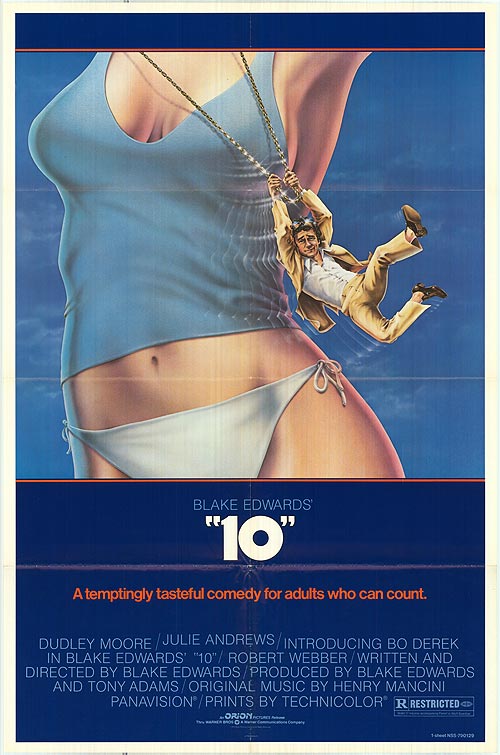‘The Substance’ vividly illustrates two women with a scheduling conflict
Kamala Harris, 59, is running for president. Nancy Pelosi was speaker of the House at age 82. Michelle Yeoh (62), Jamie Lee Curtis (65) and Francis McDormand (67) all have won recent Oscars.
Careers, and life, don’t end at 50. If you’re inclined to think that they do, you’ll be nodding throughout “The Substance” (assuming you don’t mind squirming through 140 minutes of blood-and-guts horror material). Others may wonder: Is someone wishing they were younger actually a crisis?
That doesn’t mean that “The Substance” is wrong about its overwhelming premise — that Hollywood beauty standards are so impossibly extreme that capable women hoping for success there are inevitably racing a shot clock from Day 1. “The Substance” is not the first film to make that point — it’s a point that’s probably made literally several times a day on talk shows somewhere — but it reminds us, with its title of irony, that life is at least a little bit about the superficial.
If it wasn’t so interested in schlock, “The Substance” could ponder why tiny variations in the corners of a mouth or the angle of a chin can stop passersby in their tracks. One of the oddities of “The Substance” is that it conceivably could’ve cast the real thing — Margaret Qualley’s mother is a famous actress, and Demi Moore’s daughter is a famous actress. (Qualley’s mother, coincidentally, according to Wikipedia, once was linked to Dennis Quaid.) Either of those real parental pairings assumes that all parties are on board with having clothes off and/or being constantly splattered with blood, guts and body parts. (The idea of the clothes off would probably be a harder sell to the actresses if the director were not a woman.) Would real mother-daughter casting have added authenticity? “The Substance” isn’t exactly cinema verite.
Movie scripts are great at tuning out the Unintended Consequences. In “Back to the Future,” we learn both that people do change and don’t change. In “The Substance,” we have sort of the same brain, and not sort of the same brain (you’d think the younger version would be instructed to avoid employment with Harvey). “The Substance” actually fights a common movie theme (including in “Back to the Future”) that we’re all meant for our time. Is it more likely that the most interested user of this “product” would be a 50-year-old beauty, or would it be a 30-year-old who never landed a Hollywood gig? Or is the movie telling us that, like a Hall of Fame, the only desirable candidates are AARP-eligibles who have already made a career out of looking dynamite. The movie never shows us the then 50-somethings who would’ve been elbowed out by the then-25 Elisabeth on her way to the top. There’s a troubling part of history that goes unmentioned in this film, that the human beings most associated with the idea of manufacturing beauty and weeding out everyone else were running Germany in the 1930s.
More than a decade ago, a popular term was “the 1%.” The people in Elisabeth’s shoes — the ones with Oscars and TV shows and stars on the Walk of Fame — are just a fraction of the 1%. That is an interesting choice for victim/heroine. If “The Substance” is pounding us with Hollywood’s unfair demands for beauty, maybe, like “Mommie Dearest,” it also lets slip that people who are already superstars at this incredibly privileged endeavor maybe are rather silly about it.
Women with multiple identities is an enduring fascination of moviemakers. “Vertigo,” “Persona,” “Mulholland Dr.,” “L’Avventura,” all regularly appear on greatest-film lists. The same concept is sometimes done with male characters too, for example, the Travolta/Cage “Face/Off,” more commonly in superhero films, or something like “Tootsie,” but those don’t resonate the same way. If you have a movie about a woman who may not be what she seems, you’ve got potential.
“The Substance,” a #MeToo/sci-fi/Hollywood satire/horror film, unleashes enough blood to maybe embarrass Brian De Palma. Its hand-held camera, whatever it’s shooting, can also be nauseating. The movie’s about a mysterious service that creates Frankenstein beauties with apparently no profit motive, no altruistic motive, no motive of any kind (and who are the janitors being paid to obviously keep these street level storage facilities so clean and safe), just an active phone number that is remarkably staffed by a real human being who always knows just when to hang up.
Once “born,” the Frankensteins serve no purpose other than to literally waste their originator’s time. Why either individual would want the other to exist makes no sense. It is perhaps implied that the newer model would indirectly boost the standard of living for the older one, but that’s not what happens.
It would be one thing if the same individual was inhabiting two bodies, but that’s not really the case, so it’s pointless for the originator to carry on with this endeavor after a week. The Wikipedia description says Elisabeth and Sue are “connected as one,” which presumably means that either one dies without a regular handoff from the other. San Francisco critic Mick LaSalle asserts, “We further understand the extent to which the two selves share a consciousness and the extent to which they don’t.” Whatever their origins, it seems throughout like two rivals stuck with each other. (When each person’s done for the week, there’s apparently no need to go to the bathroom to perhaps relieve some of that food and drink.)
There are easier remedies for dealing with the likes of “Harvey.” Evidently, the movie has never heard of lawyers, who would either sue for obvious age discrimination or ambulance-chase a car accident. The movie has also apparently never heard of YouTube or TikTok, whose amateur stars who provide oceans of free content have made big-budget exercise programs obsolete. The 1980s-like system in “The Substance,” represented here by one male character, is disgusting. Taking revenge on it apparently means ... providing him with a new hit show.
Often — way too often — movies outthink themselves. There are certain things the director of “The Substance,” Coralie Fargeat, wants to show you, or even wants to hammer you over the head with. One of those things is the needle. There are injections, and there are extractions. After a while, it takes effort to realize which direction they’re going. This is almost surely a nod to the amount of real injections that real people in this sphere actually take: weight loss, wrinkle removers, hormone replacement, simply getting high.
As her characters become desperate for time, the injections/extractions are done on worn-out parts of the body, and Fargeat is forcing the audience to make tedious calculations as to exactly how devious, or simply careless, either character is being and what the impact will be. All we really need to know is, someone’s fudging on the ground rules. Eventually, after some very tedious backstage developments, “The Substance” will come to a similar ending as “Network” and Spike Lee’s “Bamboozled,” best explained as a once-enthusiastic audience for a dubious program suddenly disgruntled, even horrified.
Fargeat explained to Christiane Amanpour that she began to feel traumatized about aging in her 40s, “that no one would be interested in me anymore, that I wouldn’t have any value.” Moore told a New York Times podcast of a different kind of pressure: “I did … personally experience being told to lose weight on quite a few films before I ever even had my children.”
“The Substance” was in competition at Cannes and won best screenplay, but Cannes is a fickle place and not the best barometer for a film’s effectiveness, with enormous ovations sometimes bestowed on lousy films based in part on which stars and directors are present.
Back to casting. There is an issue with choosing Margaret Qualley. She has enormous range. But she is associated with, and quite successful at, gritty, independent roles, not the equivalent of 1980s music videos. This is a character who perhaps should be more glossy, platinum, for full effect.
Even so, fortunately or unfortunately, the strongest scenes of “The Substance” are when Sue demonstrates why she should have the job on Harvey’s show — probably not what Fargeat intended. There is no romance fantasy component, unlike in “10,” but few movie plots call for such an astounding A-list beauty to regularly pose provocatively, and the revelation that there are real human beings who look like this amounts to the movie making a point in spite of itself. “The Substance” could make a stronger declaration that it’s fine that we should all applaud someone who looks like this ... just not get stoopid about it.
Elisabeth more than holds her own. You’ll watch this film and may wonder forever, Who is more beautiful, Demi Moore or Margaret Qualley. Does Elisabeth ever wonder if Harvey might be one of the folks behind The Substance? She has the opposite problem of Anne Hathaway’s Solène in “The Idea of You.” Careful what you wish for.
2 stars
(September 2024)
“The Substance” (2024)
Starring
Margaret Qualley as Sue ♦
Demi Moore as Elisabeth Sparkle ♦
Dennis Quaid as Harvey ♦
Hugo Diego Garcia as Diego ♦
Alexandra Barton as Encourager ♦
Oscar Lesage as Troy ♦
Joseph Balderrama as Craig Silver ♦
Robin Greer as The nurse ♦
Tiffany Hofstetter as The Stylist ♦
Gore Abrams as Oliver ♦
Vincent Colombe as Suit ♦
Jiselle Henderkott as Girl ♦
Oscar Salem as 2nd Assistant Director - Pump It Up Show ♦
Yann Bean as The Substance (voice) ♦
Matthew Géczy as Bob Haswell ♦
Jordan Ford Silver as Assistant Director - Pump It Up Show ♦
Christian Erickson ♦
Tom Morton as The Doctor ♦
Gregory Defleur as Happy Birthday Person ♦
Philip Schurer as Mr. Scream ♦
Olivier Raynal as Alan ♦
Louise Greggory as Restaurant Waitress ♦
Nathan Rippy ♦
Akil Wingate as Talk Show Host ♦
Viviane Bossina as Sue’s Assistant ♦
Daniel Knight as The Casting Director ♦
Billy Bentley as Suit ♦
LucieLaffin as Une Femme ♦
Matthew Luret ♦
Brett Gillen as The Lighting Designer ♦
Namory Bakayoko as Silhouette ♦
Pauline Sagetat as Danseuse Music-Hall (Big Show) ♦
Axel Baille as The Photographer ♦
Aurélien Lorgnier as Spectator
Directed by: Coralie Fargeat
Written by: Coralie Fargeat
Producer: Tim Bevan
Producer: Coralie Fargeat
Producer: Eric Fellner
Executive producer: Alexandra Loewy
Executive producer: Nicolas Royer
Music: Raffertie
Cinematography: Benjamin Kracun
Editing: Jerome Eltabet, Coralie Fargeat, Valentin Féron
Casting: Laure Cochener, Léa Moszkowicz
Production design: Stanislas Reydellet
Art direction: Stéphane Becimol, Arnaud Denis, Gladys Garot, Helena Kacic, Amélie Meseguer, Julie Plumelle, Nathalie Vaïsse
Set decoration: Cécilia Blom, Marion De Villechabrolle, Jacques Oursin
Costumes: Emmanuelle Youchnovski
Makeup and hair: Frédérique Arguello, Olivier Afonso, Frédéric Balmer, Jean-Marc Benois, Denise Boccacci, Oriane Cattiaux, Marison De, Sandrine Denis, Tom Elliott, Dave Elsey, Lou Elsey, Stéphanie Guillon, Mélissa Jacob, Alexis Kinebanyan, Brian Kinney, Andrea Leanza, Jennifer Levacher, Sebastian Lochmann, Chris Lyons, Richard Martin, Dominic Mombrun, Alexandra Moulié, Lucky Nguyen, Pierre Olivier Persin, Bryony Rumble, Marilyne Scarselli, Cynthia Scigliuto, Caroline Vlieghe


